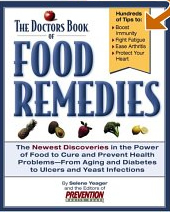🐟 Fish Health Guide
The Best & The Worst Fish For Your Health: General Information & Related Research
Medical Disclaimer
The information below provides a general overview and may not apply to everyone. Any dietary protocol should be discussed with a qualified healthcare practitioner. Please refer to: Medical & Legal Disclaimer.

Natural Health Solutions

Food as Medicine
Health Benefits of Cold Water Fatty Fish
🧬 For most people, the high amounts of omega-3 polyunsaturated fatty acids and vitamin D in fatty fish provide huge benefits to heart and overall health.
General Recommendation: At least 2 servings per week (optimally 4 or more) of cold water fatty fish low in contaminants.
⚠️ Special Populations
Pregnant women, women of child-bearing years, and young children are frequently recommended to limit intake to no more than 1 meal per month. However, some recent research suggests benefits may outweigh contamination risks when choosing fish wisely.
🧠 Stroke Prevention
14-Year Nurses' Health Study
Published in Journal of the American Medical Association (2001)
Eating fish at least twice a week vs less than once a month cut stroke risk by 50%
(Strokes caused by clots blocking arteries to the brain)
💗 Heart Disease Prevention
Same 14-Year Study Results
Heart disease risk reduction
1-3 servings/month: 20% lower risk
5+ servings/week: 40% lower risk
🎗️ Kidney Cancer Prevention
Swedish Study - 15 Years
61,000+ women followed
74% lower risk of Renal Cell Carcinoma (RCC)
Fatty fish vs lean fish consumption
📊 Overall Mortality
All-Cause Mortality
General population studies
17% reduction in death rate
Regular fish consumption
💊 Alternative Sources for Similar Benefits
Cod Liver Oil
Available in pleasant lemon flavors - no more bad taste concerns.
Click here for more infoExtra Virgin Olive Oil
High-quality source of beneficial fatty acids for heart health.
Mercury & Contaminant Concerns
Common Contaminants in Fish
- Mercury
- PCBs (Polychlorinated Biphenyls)
- Toxic metals (cadmium, lead, chromium, arsenic)
- Radioactive substances (strontium)
☠️ About Mercury
Mercury is one of the most poisonous metals in existence. It's a cumulative heavy metal poison that can damage the central nervous system and organs including the liver and gastrointestinal tract.
Mainly found in farmed fish and fish from contaminated open waters.
🚫 Fish Highest in Contaminants
Large carnivorous fish of the ocean concentrate the highest levels of toxins:
Tuna / Canned Tuna
Sea Bass
Halibut
Gulf Oysters
Marlin
Largemouth Bass
Pike
Walleye
White Croaker
Swordfish
Shark
📍 Regional Note: Wild caught freshwater fish from Eastern/Southern US are high in mercury. Atlantic fish generally contain more mercury than Pacific fish.
Fish Recommendations: Best & Worst Choices
✅ Best Choices - Low Mercury Fish
🏆 Top Recommendation: Wild Salmon vs Tuna
Recent FDA tests found the average mercury level of canned albacore tuna to be at least 35 times higher than canned salmon.
⚠️ Avoid FARMED salmon: Lower in vitamin D, higher in contaminants including carcinogens, PCBs, flame retardants, and pesticides.
🐟 FDA-Approved Low Mercury Options
*Note: Up to 6% of canned light tuna may contain high levels
🎯 Additional Good Choices
💡 General Rule: Smaller fish generally have lower mercury levels since they don't have time to accumulate toxins in their tissues.
❌ Fish to Avoid - High Mercury Predatory Fish
🔬 Why predatory fish are highest in mercury: Mercury is stored in muscle tissues. When predatory fish eat other fish, they assume the entire mercury burden of their prey.
Shark
Swordfish
King Mackerel
Albacore Tuna
Tilefish (Gulf)
Blue Fin Tuna
🎣 Sports Fishermen: Check with local authorities for advisories on fish caught in local waters for safety information.
📈 Blood Sugar Control Tip
For optimal blood sugar control, eat high-quality protein with high-quality carbohydrates as it slows mercury absorption.
Farmed vs Wild Fish: Critical Differences
🚫 Avoid Farmed Fish at All Costs
Up to 10 times more contaminants have been found in farmed fish compared to wild fish. These include PCBs, dioxins, pesticides, and PBDEs (fire retardants).
🌊 Wild Fish Advantages
🧬 Nutrition
Higher in beneficial omega-3 fatty acids and vitamin D
🎨 Natural Color
Salmon get natural color from their diet
🌍 Environment
No concentrated pollution or antibiotic contamination
🏭 Farmed Fish Problems
☠️ Contamination
Up to 10x more contaminants including carcinogens
🎨 Artificial Dye
Gray flesh dyed salmon-colored
💊 Chemicals
Antibiotics, pesticides, and drugs
🔬 Research Evidence
💗 Heart Disease Risk
Journal of the American Dietetic Association (July 2008)
Farm-raised tilapia and catfish may harm your heart due to low omega-3 and high omega-6 fatty acids.
Particularly concerning for patients with heart disease, arthritis, asthma, and inflammatory conditions.
🌊 Environmental Destruction
Sea Lice Impact: Farms kill up to 95% of juvenile wild salmon that migrate past them.
Resource Waste: Takes 2-8 kg of wild fish to raise 1 kg of farmed salmon.
Pollution: Equivalent sewage output to a city of 100,000 people.
🏭 Farming Conditions & Concerns
🐟 Overcrowding Issues
Density: 50,000 fish in 2-acre area
Space: Each fish has less room than average bathtub
Result: Physical damage, disease, infections
Treatment: Heavy antibiotics and pesticides
🍽️ Poor Feed Quality
Fed: Soy, poultry litter, hydrolyzed chicken feathers
Quality: Inexpensive, inferior feed
Result: Lower nutritional value
Impact: Lower vitamin D, higher contaminants
🦠 Disease & Contamination
Ciguatoxin Presence
Microorganisms found in farmed salmon can cause illness often misdiagnosed as multiple sclerosis.
Symptoms Include
Nausea, vomiting, diarrhea, headaches, muscle aches, numbness, hallucinations.
🦪 Shellfish Farming Concerns
🌊 Ecological Impact
High-density shellfish operations cause decreased species richness, altered abundance, and unprecedented water quality deterioration.
Observed Effects: Steep decline in starfish, crabs, jellyfish species, and marked decrease in marine biodiversity.
☠️ Cadmium Contamination
Farmed shellfish frequently contaminated with cadmium - extremely toxic even in low concentrations.
Health Effects: Immediate poisoning, liver/kidney damage, carcinogenic, bone softening and osteoporosis.